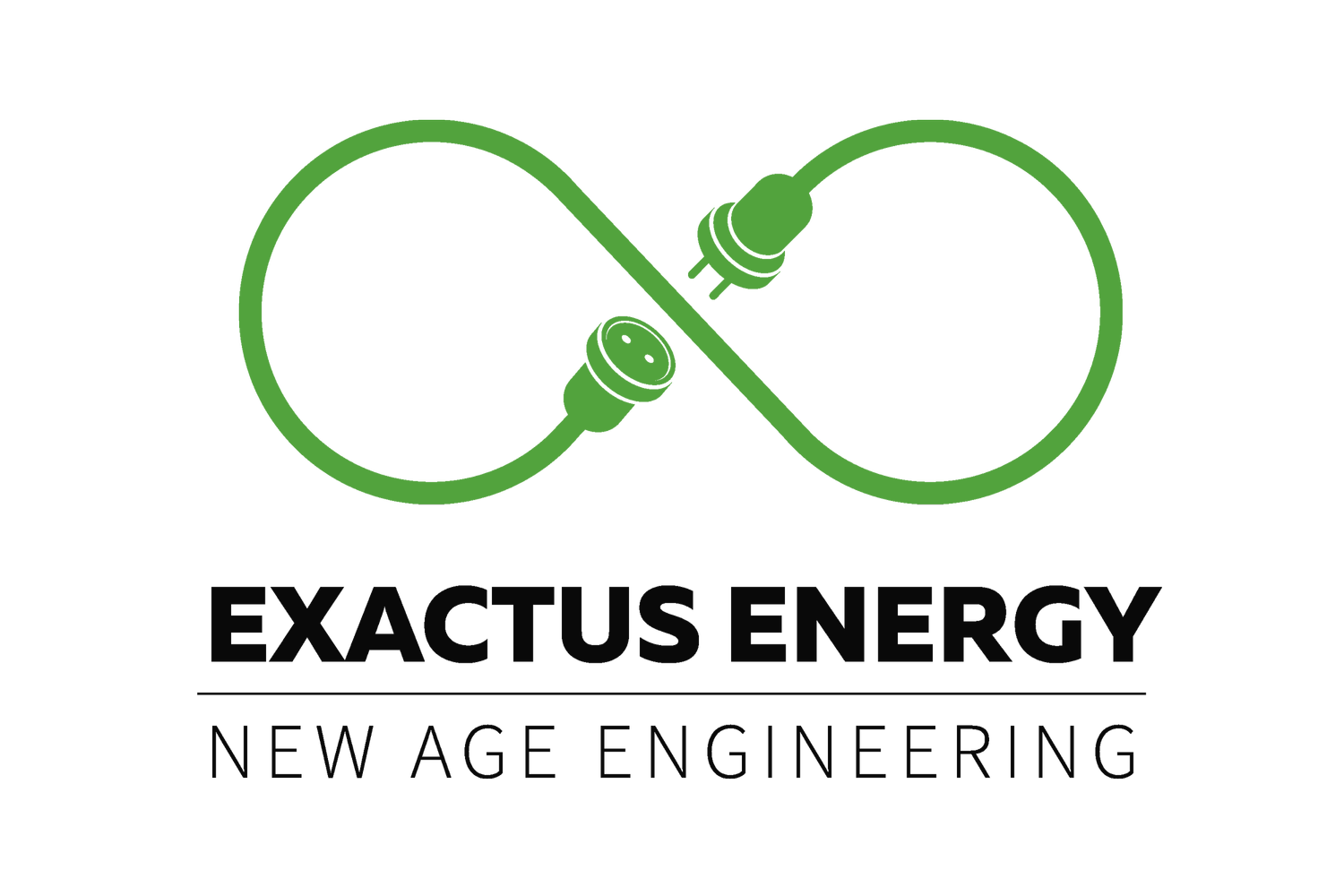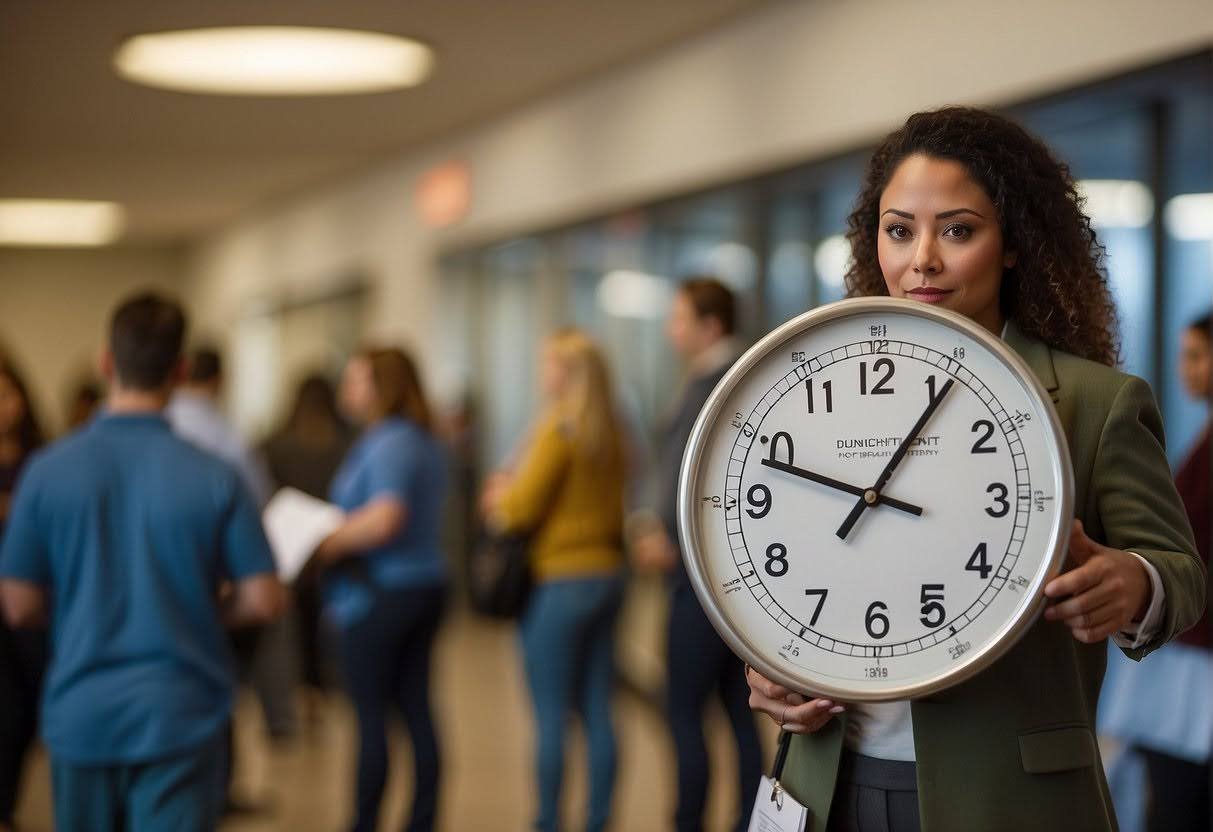You have to get a permit before you can turn on the solar panels. Consider it a seal of approval that shows your system is safe, up to code, and built correctly. This step checks everything, from local building codes to electrical standards to safety checks. It may seem like a lot of rules, but it's really about keeping your home, your family, and even your neighbors safe. And because more and more people and businesses are going solar every day, it's good to know how long the permit process might take.
How long does it take to get a solar permit? To be honest, it depends. It might only take a few days or a couple of weeks to get permission for a simple home setup. But a big business project? That could take weeks or even months.
Where you live is also very important. Every city, county, and utility company has its own list of things to do and its own pace. Sometimes those offices are busy or don't have enough staff. Demand from the market can also slow things down. That's why anyone who wants to start a solar project should have realistic expectations, plan for the time it will take, and avoid surprises at the last minute. Understanding the permit status and approval process from the beginning helps you stay on track.
Getting to Know Solar Permits
The solar permit is like a safety net for your project. The city or county wants proof that your system is safe for you, your home, and even your neighbors before they put up a single panel. Yes, that means filling out forms, but what it really means is making sure that everything is up to code, safe, and meets all the other requirements.
This is how it usually goes. The permitting office carefully checks your plans after you turn them in to make sure they follow all the rules in your area. Sometimes the review goes quickly and you get the go-ahead right away. Sometimes it takes a long time, especially if the office is busy. No matter what, the goal is the same: to make sure your solar system won't cause problems or headaches in the future.
A few panels on the roof for years can make a big difference in how heavy the roof is. Things can get dangerous quickly if the roof wasn't made for it. You need a structural permit for that reason. It's like a safety stamp that says, "Yes, your roof can handle this." It's not just paperwork or rules; it's peace of mind. It's being sure that your solar system will stay strong, safe, and worth every penny in the future.
You will also need an electrical permit in addition to the structural review. This part checks that the wiring, panels, and connections all follow the safety rules in your area and in the whole country. It may seem like just another step, but it's what keeps your system safe. When solar is set up right, it powers your home without any problems. But if it's not done right, there are real risks: fires, shocks, or expensive damage that no one wants to deal with. Required inspections ensure everything meets code before your system goes live.
No matter where you are, the permitting process is usually the same. The first step is to fill out a permit application and send it to your local planning or permitting office. Step two is to wait for the go-ahead. It's easy to understand, but the timeline can change depending on how your city or county does things. Some places go quickly, while others take their time. But almost all of them have a few common stops along the way.
When you submit your application, collect all the important documents, such as your project layout, electrical diagrams, and tech specs, and give them to the building department in your area. That's your official first step. These drawings help the local authority understand exactly what you're planning to install.
Review and approval: The department goes over everything once they have it. As long as everything is in line with the rules, they will give you a permit so you can move forward with your project.
Solar permits are what keep your system safe, reliable, and built to last at the end of the day. The rules and wait times may be different where you live, but almost every project needs some kind of electrical and structural approval before the panels can be put up. It may seem like a slow step in the process, but it's really your safety net. It shows that your solar system will be strong, safe, and able to power your home for years to come.
What Local Government and AHJs Do
How Local Government Affects Permitting
The solar permitting process is heavily influenced by local governments. The rules and departments that deal with building can make the process quick and easy or slow and hard. Some towns have made the process easier so that permits can go through faster. Some have stricter rules or offices that take longer to respond, which can make the timeline longer.
Each city or town has its own rules, and those rules have a direct impact on how long it takes to get approval. Some things that often change from one town to the next are:
Permit fees
Requirements for inspections
Restrictions on zoning
Documents Needed
Solar installers and homeowners can better prepare their applications and get through the permitting process if they know the specific requirements of their local government. Working with your local jurisdiction from the start helps avoid delays.
An Overview of the Authority Having Jurisdiction (AHJ)
The Authority Having Jurisdiction, or AHJ for short, is the group that makes sure your solar project follows the rules. In most cases, that's your local building department. But in some places, other people, like the utility company or even the fire department, might also come in to look over some parts of the project. In short, the authority is the one who says that everything is safe and up to code.
The AHJ looks over your application for a solar permit and then checks out the project to make sure it follows local rules. Knowing exactly what the AHJ wants can save installers a lot of trouble. The whole process can stop if something is missing. That's why it's a good idea to work with people who have been through it before. An experienced installer or a partner who already knows how to deal with your local permitting office can help your project move along more quickly and stay on track.
How to Apply for a Permit
Beginning the Application for a Permit
The most important thing you can do to speed up the permitting process is to have all of your paperwork in order. Solar installers should make sure to turn in all of their documents correctly the first time. If they don't, the office might send it back for corrections, which could cause delays. Most of the time, you'll be asked for a few standard things, like site plans, electrical drawings, and details about the structure. If you have these ready ahead of time, the whole thing will go faster and be a lot less stressful. Understanding what each jurisdiction requires helps you prepare properly.
Documents and Information Needed
Solar installers should be ready to turn in all the right paperwork to make the permit application process go more smoothly. These are some common documents and information that might be needed during the process:
Site Plan: Think of a basic map of your yard or roof. It shows where the panels will go, how much space they'll take up, which way they'll face, and even where shadows might sneak in.
Electrical Diagrams: These look more technical, but they're just blueprints that show how all the wires and parts fit together. In other words, how the power gets from the panels to your house. These drawings are essential for obtaining your electrical permit.
Specification Sheets: These are like "cheat sheets" for your panels and inverters. They list the features of your panels and inverters, explain what they can handle, and give you the basics on how to install them correctly.
Structural Analysis: An engineer looks at your roof and says, "Yes, it's strong enough." If it's not, they'll tell you what needs to be fixed before adding the extra weight.
Proof of insurance and a license: easy but necessary. The paperwork shows that your installer is certified and insured, which means they are professional, qualified, and not cutting corners.
Having complete documents ready when you apply helps prevent back-and-forth with your local permitting office.
Stages of Review and Approval
Your permit application doesn't just get stamped right away after you turn it in. It goes through a few people, with each department taking a turn to check it. Before anyone starts putting up panels, they want to make sure that your plans meet safety standards and local codes. The approval process typically involves multiple departments reviewing different aspects of your solar installation.
Most of the time, the review process includes things like:
First review: Local officials look over your application to make sure it has all the necessary documents and nothing important is missing.
Technical review: Professionals from fields like building, electrical, or fire check the details to make sure the project follows local laws and industry standards.
Environmental impact assessment: Before giving the go-ahead, officials will sometimes also check to see if the solar installation could hurt the environment or wildlife.
Don't be surprised if the permitting office asks for more information after your application has been reviewed. They might ask for one more piece of paper. Or a small change to your plans. Or, even worse, a whole new version with the changes built in. That kind of back-and-forth can drive you crazy. Slow. Never-ending. But it's normal. It's how they check that your system is strong, secure, and built correctly. These delays are part of the approval process and help ensure safety.
The length of time this takes really depends on your local laws, the size of your project, and any problems that come up along the way. Sometimes permits are approved quickly, and other times they take a while. But being ready to respond makes the whole thing a lot less stressful.
Permits for homes vs. businesses
Giving homeowners permission
Getting a solar permit isn't as scary as it sounds for most homeowners, especially if you have a good installer on your side. They usually do the paperwork for you, putting together things like site plans, electrical layouts, and structural details. They can get through the process a lot faster than you can because they know all the local rules.
Your HOA might also need to sign off in some neighborhoods. It's a good idea to talk to them early on so you don't run into any problems once the project starts. Once all the approvals are in place, you'll be ready to start installing. Many residential solar projects move through the permitting process relatively smoothly when all requirements are met upfront.
Most homeowners wait about two to four weeks for a permit to come through. It can be faster, especially if an engineer is already working on the project, but the exact time frame depends on how quickly your local office works.
Getting permits for commercial properties
The process of getting permits for businesses is a little more complicated than it is for homes. More paperwork, more reviews, and more hoops to jump through before you can break ground on bigger systems. Commercial solar installations typically require more detailed documentation and face stricter requirements than residential projects.
The good news is that experienced installers and project managers usually do this for you. They know how to deal with local officials, keep the paperwork in order, and make sure that everything follows building codes and safety rules. Their experience can save you a lot of time and trouble.
It's still a good idea to plan for a longer wait. It usually takes longer to get a commercial solar permit than a residential one. There are a few things that affect how long you have to wait: how big your system is, how complicated the project gets, and the rules in your area. Sometimes permits go through quickly, but other times you might have to wait a few months for everything to be approved.
The costs and fees that come with solar permits
When you're planning solar, it's easy to just think about panels, wires, and installers and be done with it. But no, permits are also included, and they cost money too. Some are small, and some hurt a little more. It all depends on where you live, how big the project is, and what city or county you live in. Permit fees for applying, fees for inspections, and maybe an extra fee you didn't expect. It's a part of the process. Bothering? Of course. But think about it now so you don't get caught off guard later.
Local governments charge permitting fees to look over your plans and make sure your system meets building codes and safety requirements. These fees could be a few hundred dollars or thousands of dollars, depending on where you live and how big your setup is. The good news is? Some places now have streamlined solar permitting, which can speed up the process and lower the cost.
After your system is set up, inspectors come in to check that everything is safe and up to code. They might look at the wiring, the strength of the roof, and even how safe it is from fire. It costs money to have each of these inspections done, usually between $100 and $500, but this varies by location. Understanding these fees helps you budget properly for your solar installation.
And then there's the cost that no one talks about: time. It can take a long time to get permits approved, which can push your installation date back on the calendar. Every day that goes by without you making power or saving money is one more day. Yes, it's not a line item on your bill, but these delays can lower your overall return.
That's why it's a good idea to do some research. Find out how long it usually takes to get a permit in your city or county and add that time to your timeline from the start. Planning ahead can save you a lot of trouble later. Check your permit status regularly to stay informed.
Here is a quick list of the main costs that come with getting a solar permit:
Permitting fees
Fees for inspections
Costs that come with delays
Are you thinking about getting solar? Just remember that permits cost money. There are fees, inspections, and sometimes you have to wait a little while for everything to be approved. Plan ahead for those costs so they don't surprise you. When you know what to expect, everything goes more smoothly. Once your system is up and running, you can enjoy the savings without worrying about how you got there.
Final Approval and Inspections
Check Before Installation
The local permitting office may want to do a pre-installation inspection before your solar system can be put in. This step makes sure that your project follows the approved plans and building codes from the very beginning. Obtaining this approval before installation prevents costly mistakes down the road.
An inspector will usually look at things like these during this inspection:
The suggested place to put the solar panels
The building or roof's structural integrity
The wires and tools for electricity
For the inspector to do their job, you need to have all the necessary documents, like building permits and approved plans, on hand. Depending on how complicated the project is and how busy the inspector is, the inspection process can take anywhere from a few hours to a few days.
Final Check and Permission to Use
After the final inspection, your installer will get a "Permission to Operate," or PTO for short. That paper gives you the green light to turn on the switch and start sending solar power to the grid. It's the last step before your solar system starts doing what you want it to do.
Just remember that it might take a while to get there. How long will it take? It depends. Some places move quickly, while others can take weeks. Here are some things that can change the wait time:
The right way to put up the solar panels and mounting systems
The right way to install and use electrical parts
Meeting any extra code requirements
Getting those final approvals isn't always quick. The process can take anywhere from a few weeks to a few months, depending on where you live and how busy your local permitting office is. It's not just about following the rules; it's also about making sure everything is done safely and correctly through proper inspection.
That being said, you don't have to follow the timeline exactly. Keeping in touch with the permitting authority can really make a difference. Respond to emails right away. Call back. And most importantly, make sure you have all your documents ready to go, like site plans, structural drawings, inspection reports, and so on.
The more organized your paperwork is, the less time they'll have to waste. It's all about cutting down on back-and-forth so your solar system can go live sooner rather than later. Checking your permit status regularly helps you stay on top of any issues.
It's important to remember that the amount of time needed for inspections and final approval can change based on things like:
The amount of work the local permitting authority has to do and how long it takes them to respond
How complicated the project is
Whether the solar installer and property owner are ready for the inspection
It usually takes a few weeks to a few months to get inspections and final approval. Getting in touch with the permitting authority on time and keeping good records can speed up the process.
Updating Solar Permitting
Online Permitting Projects
More and more cities are finally realizing that the solar permitting process needs to be updated. With so many people switching to solar, the old way of doing things—filling out paper forms, going back and forth to offices, and waiting forever—just doesn't make sense anymore.
That's why many places are now putting in place online permitting systems. You can fill out applications, upload documents, and check your status all from the comfort of your own home with these digital tools. It works faster, easier, and much better. The solar permitting process becomes more transparent when you can track everything online.
That means less trouble and lower compliance costs for solar professionals and installers. And for everyone else, it's a big step toward making solar energy easier to get and cheaper.
Getting ready for a solar permit
Working together with solar installers and engineers
It's a good idea to have a solar installer or engineer on your side before you start working on permits. They've done this a hundred times and know how to help you get through the paperwork and approvals without any problems. An experienced installer understands the local permitting process and can navigate it efficiently.
They'll also catch the small things, like neighborhood rules, HOA requirements, or limits on the size and placement of panels, so you won't be surprised later. Sorting it out early makes the process easier and less stressful.
You can save a lot of time by bringing them in early. They know what problems to look for and how to fix them quickly. And they will make sure that your solar system can handle any weather that comes your way, from snow to wind to very hot weather.
Understanding how to design equipment and systems
Knowing how your solar equipment and system work is important for keeping the permitting process going smoothly. You can talk to your installer, engineer, and even the permitting office more clearly and productively when you know the basics. Understanding your system design helps you communicate better about your solar installation plans.
When designing your system, you should pay attention to the following:
Type of solar equipment: Solar isn't the same for everyone. You can either get photovoltaic panels that make electricity or solar thermal systems that heat your water. It's not just helpful to know the difference between them; it's what helps you choose the setup that works best for your lifestyle and energy goals.
System size: Bigger isn't always better. Your solar system should be the right size for your home and the amount of energy you use. But keep in mind that local rules or permits may limit what you can install. Your jurisdiction may have specific requirements about system capacity.
Mounting System: Panels don't always have to be on the roof; they can be on the wall. Sure, that's the most common choice, but if your layout or local rules are different, ground-mounted or wall-mounted systems might work better. It all depends on what works best in your space. The building department will review your mounting plans during the approval process.
It's not just the panels that matter; inverters and other equipment are also important. Inverters change solar power into electricity that your home can use. Wiring, connectors, and monitors keep the solar system safe and running well. They're all important pieces of the puzzle.
Storage solutions (when needed): Adding batteries? That changes everything. Storage affects how your solar system is built, how well it works, and what permits you need. So it's important to know this before you start. Battery storage may require additional inspection and approval from your local authority.
The more you know about your system and tools, the easier things will be. You don't have to guess or depend on other people to explain everything. You can instead speak up, ask the right questions, and go through the solar permit process with confidence. You should feel in charge of your project from beginning to end.
Questions that come up a lot
How long does it usually take to get a permit to install solar panels?
The truth is that it depends on where you live. In some places, it only takes a few days. In other cases, it might take a few weeks to finish. There isn't a single answer that works for everyone, so the best thing to do is call your local permitting office. They will be able to give you the most accurate timeline for your area based on their current workload and permit status tracking.
Are there any special rules for getting a solar permit for a home installation?
It really depends on where you live whether or not you need a solar permit. Your city or county might want to check the structure, require an electrical permit, need zoning approval, or all three. It can sound a little overwhelming, but you don't have to guess your way through it. Just call or stop by your local permitting office. They'll tell you exactly what documents and requirements you need so you can keep things simple and not have to deal with any problems later. Understanding your local jurisdiction's rules from the start prevents delays.
How soon can I expect to start making power after I put up solar panels?
You can usually expect to start making power within a few days to a week after getting the right permits and putting in your solar panel system. The amount of time it takes for your solar system to start making electricity can be affected by things like the weather, the size of the system, and how it is oriented. You'll need to pass final inspection and receive approval before your system can officially go live.
How long does it take to install commercial solar panel systems?
Commercial solar projects take time, and the schedule can change a lot. Things can take longer because the systems are bigger, the setups are more complicated, and the permitting rules are strict. Most of the time, it will take a few weeks or even a few months for your solar system to go live after your permits are approved. It doesn't happen right away, but with the right people and a good plan, things keep moving forward. Commercial solar installations face more extensive review and inspection requirements than residential projects.
Do you need a permit to put up solar panels anywhere in Canada?
Most of the time, you need a permit to install solar panels in Canada, but the rules can be different depending on where you live. The best thing to do is to call your local permitting office because each province and municipality has its own solar permitting process. They'll tell you exactly what you need for your setup so you can plan without any surprises. Local jurisdiction requirements vary significantly across different regions.
In some cities, can the solar permit process be sped up?
You might be able to speed things up in some places. Some cities and towns will approve solar project permits faster than others, especially if the solar installation is simple and there are enough resources. You might not get it, but it's worth a shot. Get in touch with your local permitting office to find out if they have any kind of expedited approval process. You might be able to speed things up a bit by working with an experienced installer who knows the local requirements and can help you avoid delays in obtaining your solar permit.






